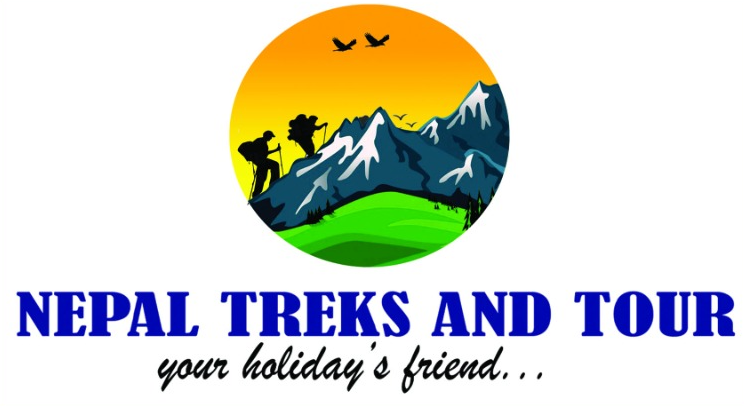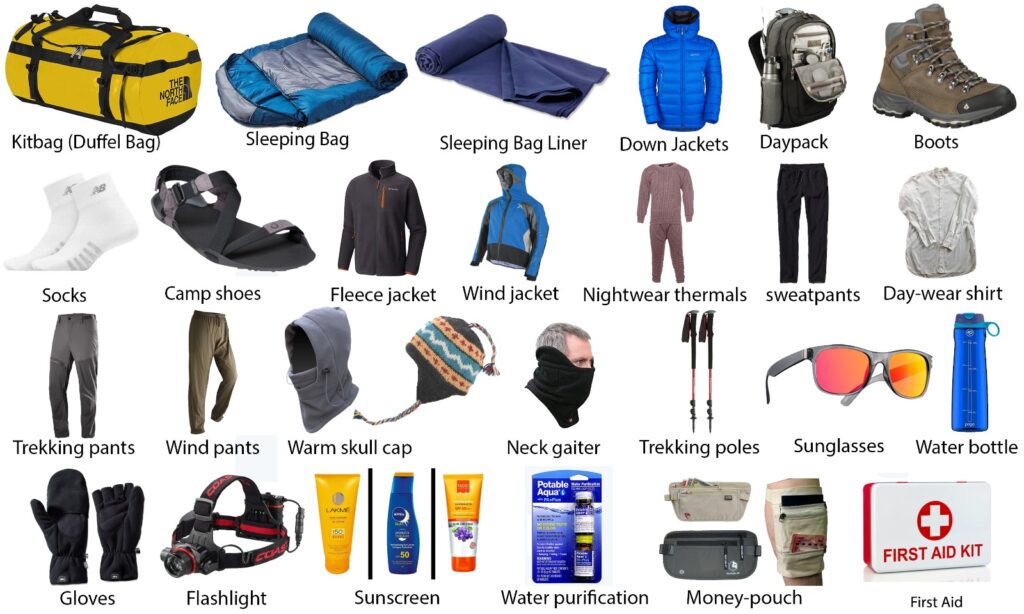If you are planning to trek to Everest Base Camp (EBC), packing smart is just as important as physical preparation. The right gear ensures you stay warm, safe, and comfortable throughout the journey. In this guide, we provide a complete Everest Base Camp Trek Packing List, covering essentials, recommended items, and pro tips.
Why Is the Packing List Important?
The Everest Base Camp Trek takes you from Lukla (2,860m) to 5,364m at EBC, with diverse weather conditions, from warm sunny days to freezing nights. Packing properly ensures:
- You stay warm at higher altitudes.
- You avoid unnecessary weight.
- You are prepared for unexpected weather changes.
Everest Base Camp Trek Packing List
1. Clothing
✔ Base Layers (thermal tops and bottoms)
✔ Trekking Shirts (moisture-wicking)
✔ Fleece Jacket / Sweater
✔ Down Jacket (warm, lightweight, and packable)
✔ Waterproof and Windproof Jacket
✔ Trekking Pants (quick-dry)
✔ Warm Hat / Beanie
✔ Sun Hat or Cap
✔ Gloves (inner liner + insulated outer gloves)
✔ Hiking Socks (wool or synthetic, 4–6 pairs)
2. Footwear
✔ Sturdy Trekking Boots (broken-in, waterproof)
✔ Lightweight Shoes / Sandals (for evenings)
✔ Gaiters (for snow or muddy trails)
3. Sleeping Gear
✔ Sleeping Bag (rated for -15°C to -20°C)
✔ Sleeping Bag Liner (optional, adds warmth)
4. Backpacks & Bags
✔ Duffel Bag (80–100L, carried by porter)
✔ Daypack (30–40L, for essentials you carry yourself)
✔ Rain Cover for Backpack
5. Trekking Essentials
✔ Trekking Poles
✔ Headlamp with Extra Batteries
✔ Sunglasses (UV protection)
✔ Water Bottles or Hydration Bladder
✔ Water Purification Tablets or Filter
✔ Personal First Aid Kit
6. Toiletries & Personal Items
✔ Sunscreen (SPF 50+)
✔ Lip Balm with SPF
✔ Wet Wipes / Hand Sanitizer
✔ Quick-Dry Towel
✔ Toothbrush & Toothpaste
✔ Toilet Paper (carry your own)
7. Electronics & Gadgets
✔ Power Bank (solar charger optional)
✔ Camera or GoPro
✔ Phone with Offline Maps
✔ Extra Memory Cards
8. Travel Documents & Money
✔ Passport + Photocopies
✔ Trekking Permits (TIMS & Sagarmatha National Park Entry)
✔ Travel Insurance (must cover high-altitude trekking)
✔ Cash in Nepali Rupees (ATMs are not reliable on the trail)
Pro Packing Tips for EBC Trek
✅ Pack light but smart – most people overpack.
✅ Layering is key to adapting to temperature changes.
✅ Buy or rent gear in Kathmandu if you don’t want to bring everything.
✅ Waterproof all important items.
✅ Use packing cubes to stay organized.
Everest Base Camp Trek Packing List – FAQs
1. What is the maximum weight limit for luggage on the EBC trek?
Most airlines flying to Lukla allow 10kg check-in + 5kg hand luggage. Porters usually carry up to 15kg per trekker.
2. Can I rent trekking gear in Kathmandu?
Yes, you can rent down jackets, sleeping bags, and trekking poles at Thamel for a reasonable cost.
3. Do I need crampons for Everest Base Camp trek?
Not usually, unless you are trekking in winter (Dec–Feb) when trails may be icy.
4. How cold does it get at night during the trek?
At higher altitudes, temperatures can drop to -10°C to -20°C at night, especially in winter and early spring.
5. Should I bring a water purifier?
Yes, it’s highly recommended. Bottled water is expensive and not eco-friendly. Tablets or a SteriPen will save you money.
6. What kind of sleeping bag do I need?
A -15°C to -20°C down sleeping bag is best. You can rent one in Kathmandu if needed.
7. Do I need special boots for the trek?
No mountaineering boots are required, but sturdy waterproof trekking boots with ankle support are essential.
8. How many pairs of socks should I carry?
Carry 4–6 pairs of trekking socks. Rotate them to keep your feet dry and prevent blisters.
9. Should I carry snacks?
Yes! Energy bars, nuts, and chocolate are great. Local tea houses have limited options and higher prices.
10. Can I charge my phone and camera during the trek?
Yes, but charging costs extra ($2–$5 per charge). Carrying a power bank is highly recommended.
11. Is it better to bring a duffel bag or a backpack?
A duffel bag is better since porters carry it. You only carry a daypack with essentials.
12. Do I need altitude sickness medication?
Yes, bring Diamox (consult your doctor). It helps reduce altitude sickness risk.
13. Can I buy warm clothes in Nepal?
Yes, Kathmandu’s Thamel area has both branded stores and cheaper local options.
14. Do I need a down jacket for the trek?
Yes, a good quality down jacket is a must for evenings and higher altitudes.
15. How do I protect my electronics from the cold?
Keep batteries inside your sleeping bag at night. Cold drains them fast.
16. Should I pack a rain jacket for EBC?
Yes, especially if trekking during spring or monsoon (May–Sep).
17. Can I use normal jeans for trekking?
No. Avoid jeans as they are heavy and not quick-dry. Stick to trekking pants.
18. Do I need a trekking pole?
Yes, it reduces knee strain, especially on downhill sections.
19. Is Wi-Fi available on the trek?
Yes, most lodges offer Wi-Fi (Everest Link card), but it’s slow and costs extra.
20. What is the biggest mistake trekkers make when packing?
Overpacking. Carrying unnecessary items makes trekking harder. Stick to essential gear only.







